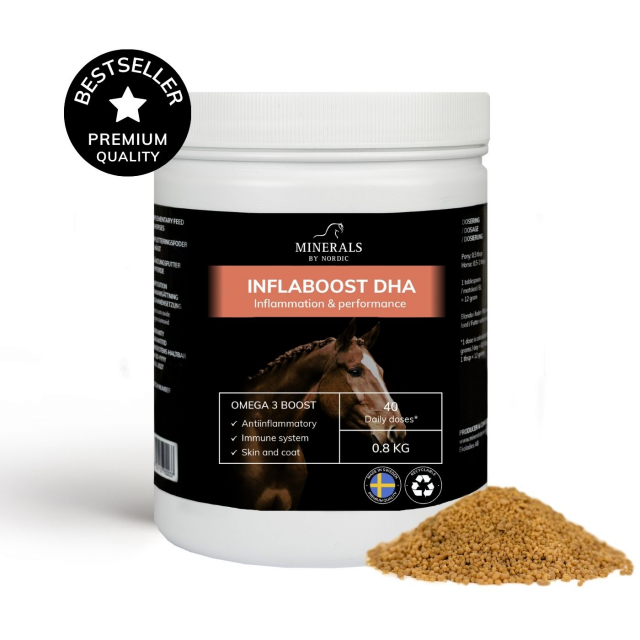
How to prevent bone spavin
Bone spavin is a degenerative joint disease that affects horses and primarily impacts the lower parts of the hind legs, especially the hock joint. It is a form of osteoarthritis where there is a progressive loss of cartilage followed by the conversion of joint cartilage into bone, which can lead to stiffness and pain for the horse.
How bone spavin develops
The disease often starts with inflammation in the joint, which over time leads to cartilage breakdown. As the cartilage deteriorates, the body tries to compensate by forming new bone material, resulting in abnormal bone growth around the joints. This extra bone material can limit mobility and cause pain when the horse moves.
Symptoms of bone spavin
- Lameness or uneven gait, especially after rest.
- Swelling around the affected joint.
- Increased stiffness that may ease somewhat after the horse has moved.
- Over time, the horse may show signs of chronic pain and may become unwilling to perform movements that involve bearing weight on the affected joints.
Risk factors for bone spavin
- Genetics: Some breeds and bloodlines are more predisposed to the disease.
- Age: Older horses are more likely to develop bone spavin.
- Overweight: Extra stress on the joints from being overweight can also contribute to the development of spavin.
- Overexertion: Frequent hard training or work that involves a lot of jumping or rapid changes in direction can increase the risk.

Preventive treatment
Preventing bone spavin in horses requires a comprehensive approach that involves proper care, diet, exercise, and regular monitoring of the horse’s health.
Balanced diet: Ensure that the horse receives a well-balanced diet rich in essential nutrients, especially calcium and phosphorus for strong bones and joints, as well as vitamins and minerals that support joint health and prevent inflammation. Avoid overfeeding, as excess weight increases stress on the joints and can contribute to the development of arthritic conditions. Adjust the horse’s feed intake based on its activity level and body condition.
Appropriate exercise: Exercise is important to keep the horse strong and flexible! Always start with a proper warm-up to loosen the muscles and joints before more intense training, and end with a cool-down period. Include a variety of activities in the training program to avoid overworking specific joints. For example, combine leisurely walks with more intense exercises like dressage or jumping.
Adaptation based on age and condition: Be especially cautious with young horses whose joints and bones are still developing. Avoid overly intense training that can cause stress fractures or other joint and ligament injuries. For older horses, adjust the training to reduce strain on worn joints and bones.
Regular veterinary check-ups: Regular veterinary examinations can help detect early signs of spavin or other joint problems before they become serious.
By following these guidelines, you can reduce the risk of your horse developing bone spavin while improving the horse’s well-being and performance.

 SWE
SWE



 ENG
ENG NO
NO AX
AX DE
DE